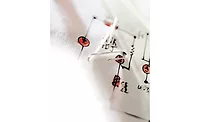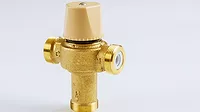John Siegenthaler: Dos and don’ts of hydronic system design
10 lessons learnt.

Anyone who says they wouldn’t change a thing on the hydronic systems they’ve designed or installed over the last decade is either so oblivious to changes in technology that they don’t know any better, so egotistical they can’t accept that improvement of their work is possible, or so foolish they don’t care what they’re missing out on.
Over the years, I’ve had the good fortune of meeting hundreds of individuals I regard as true hydronic-heating pros. Many have willingly shared stories of their experiences and their experiments. I can’t think of a single one who wouldn’t admit they’ve made significant changes in their design or installation practices over the last few years.
Like many of them, I’ve spent hours watching hydronic heating systems go through their paces. Each time, I compare what I see, feel and hear to what theory says I should see, feel and hear. The inevitable discrepancies between the theoretical and the observed are what drive most of us along a continuous improvement plan. Not because some standard or code mandates it, but because it’s what any professional strives to do.
Here are a few lessons I’ve learned over the years. Some came as the result of improved technology. Others were learned through 2020 hindsight. All have influenced the way I now design systems.
1. Always protect conventional boilers installed in low temperature systems against sustained flue gas condensation. Although I’ve talked about this concept many times in previous columns, it wasn’t something I always understood or cared about. During my hydronics adolescence, I was so concerned about delivering the proper supply temperature to the distribution system, I didn’t even think about what went back to the boiler. However, after seeing first-hand what sustained flue gas condensation can do to boilers and vent connectors, now I wouldn’t think of designing a system that uses a conventional boiler without proper protection.
My experience aside, boiler protection is still not fully understood in our industry. Myths abound about what does and doesn’t provide proper boiler protection. Boilers continue to be installed unprotected in both residential and large “engineered” systems.
Case in point: I once visited the main building at a country club resort that was heated and cooled by a large water source heat-pump system. Each of the 32 heat pumps connected to a constantly circulating piping loop. The loop’s temperature was maintained below 90° F by a cooling tower (when necessary), and above 70° by a staged multiple-boiler system. The boilers were connected to the main loop using pairs of closely spaced tees.
These boilers have never operated above the dewpoint of their exhaust gases. As a result, all three boilers had been replaced at least once over the last decade. The replacements are piped the same way, and doomed to the same premature death-by-condensation as their predecessors. All because the design engineer wasn’t aware of, or ignored the need for boiler protection.
To properly protect a boiler from flue gas condensation, there must be a “clutch” (a mixing device) between the “engine” (the boiler) and the “drive train” (the distribution system).
In a car, proper control of the clutch allows the full power of the engine to flow to the drive train without “lugging down” the engine.
Likewise, a mixing control that senses and reacts to low return temperature allows the full heat output of the boiler to reach the distribution system without pulling the boiler temperature down to where sustained flue gas condensation occurs.
To properly protect the boiler, the mixing control must sense the return temperature and “feather the clutch” when necessary (by reducing hot water flow through the mixing device). If a proposed boiler-protection scheme doesn’t sense return water temperature, it can’t properly protect the boiler. If you can’t “see it,” you can’t control it!
2. Don’t allow customers to select from various hardware options. While purchasing your last car, did you get to choose between different types of spark plug wires? Of course not. Some design professional made an informed decision for you. To some extent, that decision influenced the price you paid for the car. Even if you wanted to purchase that car with different spark plug wires, chances are it simply wasn’t an option.
When it comes to heating systems, you’re the professional who should make the decisions regarding hardware. You know what the system needs to assure a long and reliable life. If your customers hear that option B does “essentially the same thing” as option A, but costs half as much, why would they ever choose option A? Why even bring such a possibility up for discussion? Why let people who are usually unfamiliar with the technical intricacies of hydronic heating select the hardware you will use?
Select what you feel provides a quality system and price the job accordingly. If that’s not acceptable to the potential customer, move on to the next job. You won’t regret it.
3. Always document the systems you install. Long after it’s built, there comes a time in the life of every building when plans for expansion or other renovations will be made. Chances are the design and routing of the heating system will factor into the decisions being made.
It’s impossible for designers or installers to remember every detail of every system they work with. Even if you’re blessed with a photographic memory, there’s no guarantee you’ll be available when it’s time to print out those neural images.
I always make piping and wiring schematics for the systems I design, and encourage anyone who’ll listen to do the same. Proper documentation of systems is not only indispensable during installation, it offers lasting value over the life of a building. It’s also evidence of professionalism that, when properly dispensed, can be a tremendous marketing tool. Make it a part of your professional routine and price it into the job.
Today, there are plenty of options for CAD software. Some of them can even be downloaded from the internet for free. Nearly all of them can make scaled tubing layouts, piping schematics and electrical schematics.
Complement your drawings with plenty of on-site photos taken during installation. When the job is complete, put all the drawings, saved in PDF format, and all labelled photos on a thumb drive and give it to your client for archiving. Obviously, keep a copy of all this documentation on your own computer.
4. Install isolation valves (or flanges) on every circulator. Did I ever tell you about the time I tried the “quick switch” procedure with a small, wet-rotor circulator? The circulator had succumbed after 20 years of service. The system’s designer — some guy who writes about hydronic heating and draws lots of schematics — had not seen the need to install isolation valves or flanges, even though there were more than 950 gallons of water behind and above that circulator.
The “quick switch” procedure might have worked had those flange gaskets not have rolled over when I tried to shove the replacement circulator between a pair of immovable flanges. Let’s just say that a good bath of “dead” water from a hydronic system teaches one valuable lessons.
5. Be sure customers understand sidewall-venting issues before committing to their use. Sidewall venting has its place, and when properly applied, can save lots of time and money.
However, don’t put a sidewall vent a few feet away from a backyard patio assuming your customers enjoy the aroma of various hydrocarbon emissions as much as you do. Don’t put it near steps or front entrances where frost and ice will collect on surfaces compromising both aesthetics and safety. And don’t put it where a plume of water vapor on cold winter days literally makes it appear that the building is on fire!
6. Don’t rely on a single thermostat in a building that’s highly “compartmentalized.” This refers to situations where the doors to individual rooms in a larger building remain closed most of the time. The variations in heat gains and losses make it nearly impossible to ensure the proper comfort in each space, even when the distribution system uses room-by-room circuiting. Use thermostats or thermostatic radiator valves to provide room by room temperature control.
7. Don’t “design-as-you-solder.” Over the years, I’ve learned it’s better to make plans before reaching for the tools. This sentiment is not shared by everyone in this industry, especially in regard to piping design. Some hydronic piping systems seem to evolve fitting by fitting. They expand out from the boiler, meander around the mechanical room and through the building, eventually finding their way back to the boiler.
Along the way, the installer miraculously receives “inspirations” about how best to proceed for the next five minutes. Such installers are like artists who throw globs of paint at a canvas until some indescribable impulse tells them what they’ve created constitutes a masterpiece.
I continue to see the results of morphing proven piping concepts together the way biologists splice genes in hopes of retaining only the desirable traits. Judging by some of the “inspired” piping layouts that arrive on my fax machine, this approach is more likely to produce a Frankenstein than a Superman.
Piping aberrations continue to waste time, material and customer patience in our industry. Larry’s concept of primary/secondary piping differs from Curly’s gut feeling of how it should be installed. Meanwhile, Moe doesn’t see why everything can’t just be connected in one big series loop!
Study the basic hydronic piping layouts. Learn where each is best applied. Plan your layout with paper and pencil instead of tubing and torch.
8. Stay away from open loop systems whenever possible. Closed loop systems are cleaner, quieter and have less operating problems than open loop systems. If you have to incorporate a non-pressurized component, such as an outdoor wood-fired furnace, separate it from the balance of the system with a heat exchanger.
9. Design for long-term serviceability. As an industry, we promote the concept that hydronic-heating systems should have a long service life. We must do everything possible to assure we deliver it.
Picture the hardware you select after it’s been installed for 20 years. Do you see it holding up in the environment you are about to place it in for that period of time? Is the continued service of the systems you install critically dependent on a single component? If so, will that component, or an updated/compatible version of it be available 20 years from now? Can you replace it, if necessary, without performing major surgery on the rest of the system?
Reasonable customers accept the fact that mechanical components fail over time. They shouldn’t accept that when that happens, we can’t expeditiously correct the problem.
10. Never forget that you install premium heating systems. They are seldom going to be the lowest-priced option available to your customer, even if you foolishly compromise performance by leaving out necessary hardware — such as the actuating motor and controller for a four-way mixing valve.
If, after explaining the benefits your systems offer, your potential customer still wants price over performance, walk away from the situation with a smile on your face. You’ve made the right decision. A new opportunity to practice your profession without compromise is right around the corner.
I expect my list of hindsights to grow a bit over the next few years. Hopefully most of the changes will result from improved technology instead of previously undiscovered mistakes.
Looking for a reprint of this article?
From high-res PDFs to custom plaques, order your copy today!







